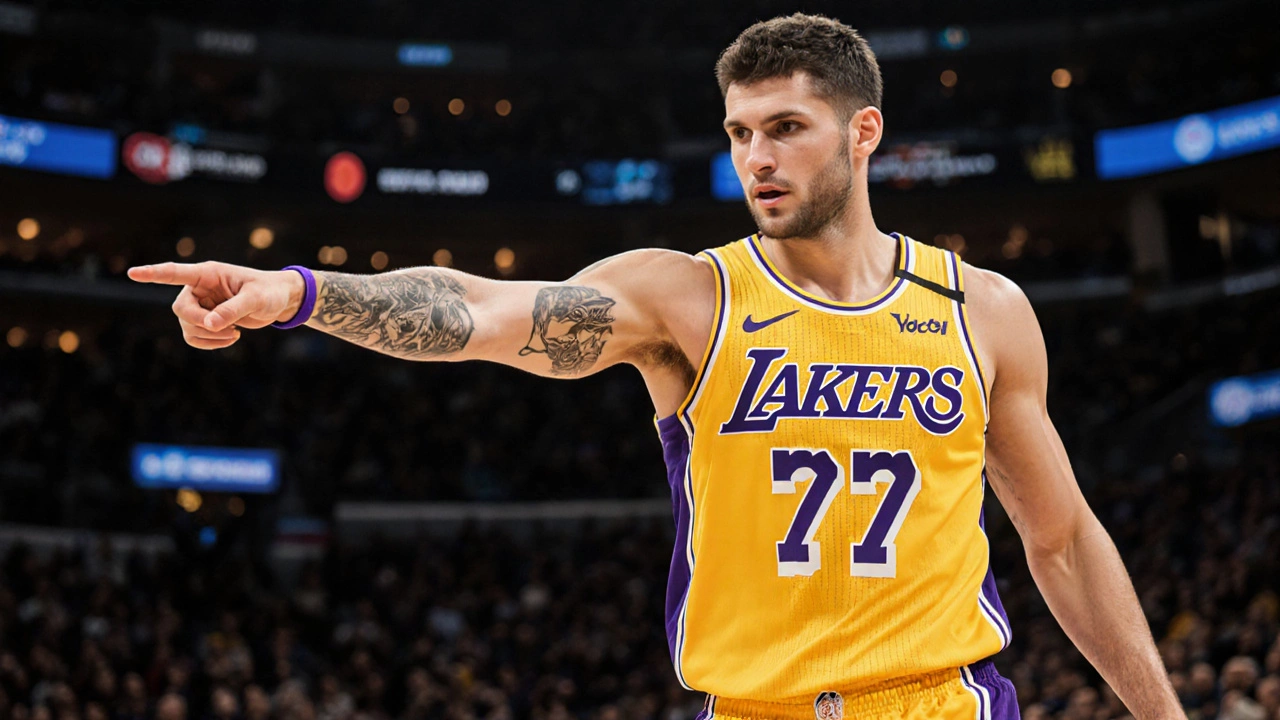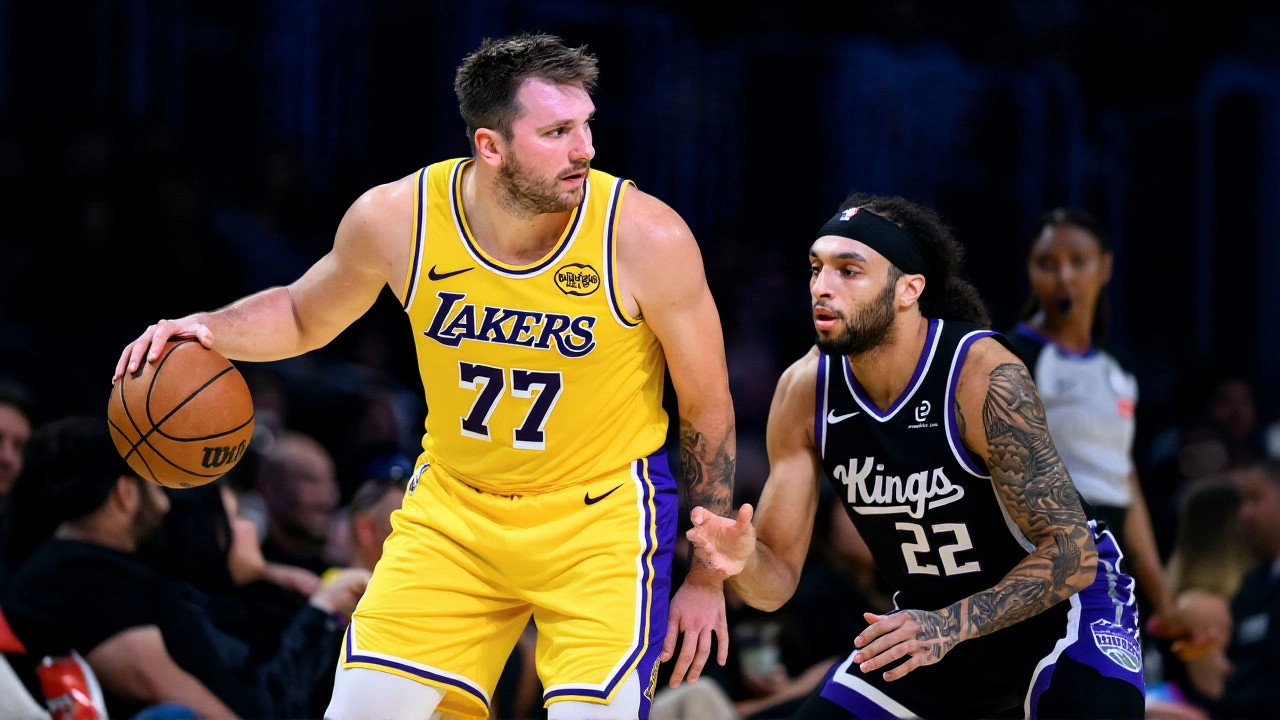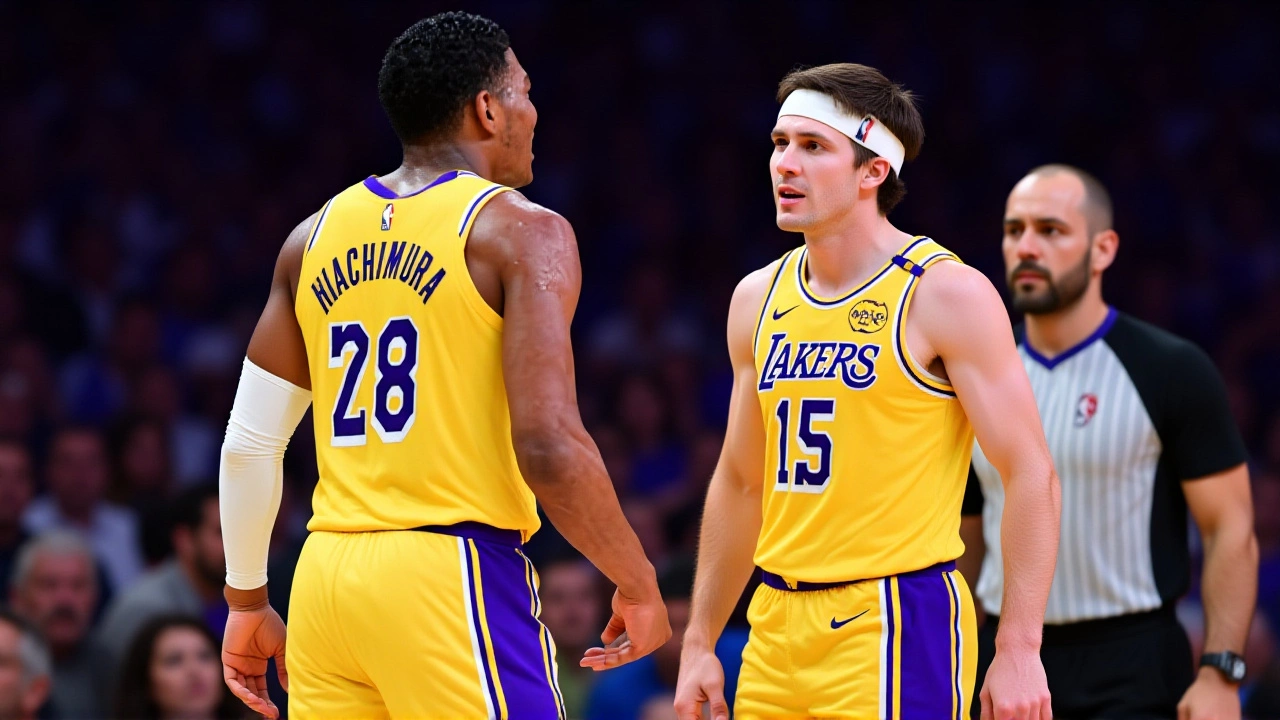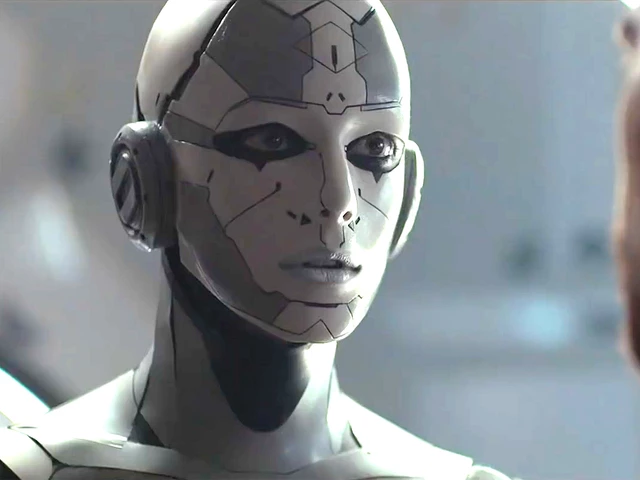The Los Angeles Lakers have officially unveiled their 2025-26 starting lineup, and the biggest surprise isn’t just who’s starting — it’s who isn’t. Luka Dončić, the 26-year-old Slovenian phenom, is now the full-time starting point guard, a role once considered unthinkable for a player who spent his first five NBA seasons with the Dallas Mavericks. The announcement, confirmed by CBS Sports, ESPN, and Lineups.com on October 28, 2025, signals a seismic shift in how the Lakers plan to compete — and survive — in a league increasingly dominated by speed, spacing, and versatility.
Who’s Starting, and Why It Matters
The official starting five, as of October 28, 2025: Luka Dončić at point guard, Austin Reaves at small forward, Gabe Vincent at shooting guard, Rui Hachimura at power forward, and Deandre Ayton at center. That’s right — LeBron James, now 40, isn’t listed as a starter. Not once. Not even as a placeholder. The move is deliberate. Coach JJ Redick, hired in June 2025, has built a positionless offense that demands every perimeter player be capable of initiating plays. Dončić, with his court vision and passing IQ, is the perfect engine. Reaves, who played 78 games as a starter last season, now slots in as a secondary ball-handler and defensive stopper. The Lakers aren’t just changing positions — they’re redefining roles.Deandre Ayton: The Missing Piece
After Anthony Davis departed for the New Orleans Pelicans on July 1, 2025, the Lakers faced a gaping hole at center. Enter Deandre Ayton, the former No. 1 overall pick, signed to a four-year, $133 million deal on July 6. He’s not just a rim-runner. Ayton averaged 17.2 points and 10.4 rebounds last season with the Portland Trail Blazers — and he’s improved his three-point shooting to 36%. That’s critical. The Lakers’ new system thrives on floor spacing, and Ayton’s ability to stretch the defense opens driving lanes for Dončić and Reaves. It’s a stark contrast to last season’s reliance on Davis’s isolation game. The difference? This team moves. Constantly.LeBron James: The Ultimate Flex
Here’s the twist: LeBron James, despite being the franchise’s face for 20 years, is now a rotational player. He’s not injured. He’s not benched. He’s being managed. The Lakers’ sports science team, led by head athletic trainer Marco Bilić, has strict protocols: no back-to-back games for players over 30, and mandatory 18-hour recovery windows. James played just 9 of 28 possible games from December 2024 to January 2025 under former coach Darvin Ham. This season, it’s even tighter. He’ll likely average 28 minutes per game — down from 34 last year — and appear at both forward spots depending on matchups. His role? Closer. Finisher. Floor general in crunch time. He’s not starting, but he’s still the most dangerous player on the floor when it matters most.
Lineup Fluidity and the DFS Wild Card
Don’t be fooled by the official depth chart. The Lakers have already played two different starting fives in their first two games this season. On October 12, against the Golden State Warriors, Dalton Knecht started at shooting guard. On October 14, in Phoenix, Marcus Smart and Dončić both took the floor as point guards. That’s not a mistake — it’s strategy. Lineups.com notes this flexibility is designed to confuse defenses and exploit mismatches. For daily fantasy sports players on DraftKings Inc. and FanDuel Group, this chaos is gold. Lineup changes trigger 12-15% betting line shifts within 45 minutes of official announcements. Fantasy managers who rely on pre-game projections are getting burned. Those who follow the Lakers’ 30-minute pre-tip announcements — issued from their headquarters at 1111 S. Figueroa Street — are winning.Financial Pressure and the Luxury Tax Tightrope
The Lakers’ payroll? A staggering $186.3 million — over $45 million above the $140.9 million salary cap. That means they’re deep in luxury tax territory, with the second apron ($195.3 million) looming like a sword. Every minute James, Smart, or even Ayton plays increases the risk of triggering punitive tax penalties. That’s why the team is so aggressive with load management. It’s not just about health — it’s about dollars. The front office, led by Rob Pelinka, is playing a high-stakes game: win now, but don’t bankrupt the franchise doing it.
What’s Next? The Sacramento Showdown
The Lakers’ next game is October 30, 2025, at 7:30 PM PT against the Sacramento Kings at the Golden 1 Center. The starting five won’t be announced until 7:00 PM — 30 minutes before tip-off, per NBA protocol. Will Knecht start again? Will Smart slide into the backcourt? Will James play power forward for the first time this season? No one knows. And that’s exactly how Jeanie Buss, the team’s controlling owner, wants it. The Lakers aren’t just building a team — they’re building an enigma.Frequently Asked Questions
Why isn’t LeBron James starting anymore?
LeBron James, at 40, is under strict load management protocols designed to preserve his health and extend his career. The Lakers’ sports science team limits his minutes in back-to-back games and road trips, reducing his average to around 28 minutes per game. He remains a crucial finisher and floor general in clutch moments but is no longer needed as a 35+ minute starter, allowing younger players like Dončić and Reaves to lead the offense.
How does Deandre Ayton fit into the Lakers’ system?
Ayton is the perfect fit for JJ Redick’s positionless offense. Unlike Anthony Davis, who operated mostly in the post, Ayton can stretch the floor with a 36% three-point shot and roll efficiently to the basket. His mobility allows the Lakers to play smaller, faster lineups without sacrificing rebounding or rim protection — a key upgrade from last season’s stagnant offense.
Why are there so many lineup changes?
Coach JJ Redick is using a fluid, read-and-react system where multiple players can initiate offense. This confuses defenses and creates mismatches. The Lakers have used four different starting fives in their first three games. These aren’t injuries — they’re tactical adjustments designed to exploit opponent weaknesses, especially on the road.
How does this affect fantasy basketball players?
Fantasy managers on DraftKings and FanDuel face volatility: lineup changes trigger 12-15% betting and salary adjustments within 45 minutes. Players like Knecht, Smart, and even Bronny James can suddenly become high-value plays. Waiting until 30 minutes before tip-off to finalize lineups is now essential — not optional — for anyone serious about DFS success.
What’s the risk of the Lakers’ high payroll?
The Lakers are $45 million over the salary cap and $17 million above the second tax apron ($195.3 million). Exceeding that threshold triggers severe restrictions: no trade exceptions, no sign-and-trade deals, and no use of the bi-annual exception. This limits future roster flexibility, making every decision — even minute distribution — a financial calculation.
When will the next starting lineup be announced?
The Lakers announce their official starting five exactly 30 minutes before each game’s tip-off, per NBA protocol. For the October 30 game against the Sacramento Kings, that will be 7:00 PM PT at the Golden 1 Center. Local beat reporters and the team’s communications department at 1111 S. Figueroa Street are the only reliable sources for real-time updates.




